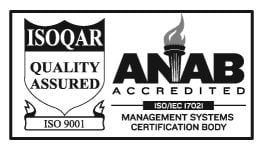Magnetic Bead Technology - DNA/RNA Isolation
Isolate nucleic acids (gDNA or Total RNA) from animal tissues using magnetic bead technology optimized for microfuge tubes.
Technological Advantage over Spin Columns
In comparison with spin columns, magnetic beads offer a much faster and easier process. Yields and quality are as high or better, and the process takes half the time.
The iron core beads are coated to bind nucleic acids. The beads travel in suspension in the homogenate, so the coated surfaces of the beads interact with the nucleic acids throughout the entire process. This allows the process time to be short and without high forces. Gentle inverting of the sample tubes a few times is sufficient.
In contrast, in spin columns, to have as much interaction between the nucleic acids and the coated fibers, the fibers must be so tightly woven together that the homogenate must be forced through the spin column under high pressure.
In summary, using magnetic beads is a faster, easier process and provides as good or better results.

How It Works
The magnetic beads used in the kits are made of very small iron oxide particles, coated with a functional layer that binds nucleic acids when placed in the binding buffer. (Similar beads with different coatings can bind other types of molecules.) The nucleic acids are released from the beads when the beads are placed in an elution buffer.
No Spin Columns
Use of magnetic beads instead of spin column eliminates the need for multiple centrifugation steps and transferring sample tubes between racks and the centrifuge over and over again, which is both tedious and time-consuming. In contrast, magnetic beads allow sample to gentle bind to the beads in suspension and wash steps are quick and easy. Use our magnetic rack system so that your sample tubes remain in the same rack throughout the process, for both the gentle mixing and the magnetic separation steps.
No Toxic Chemicals
The kit does not require the use of toxic solvents such as Trizol, Phenol and Chloroform. Therefore, the procedure can take place right on the bench top and not in a chemical hood. Also, at the end of the procedure, there is no accumulation of toxic chemical to be disposed of!

